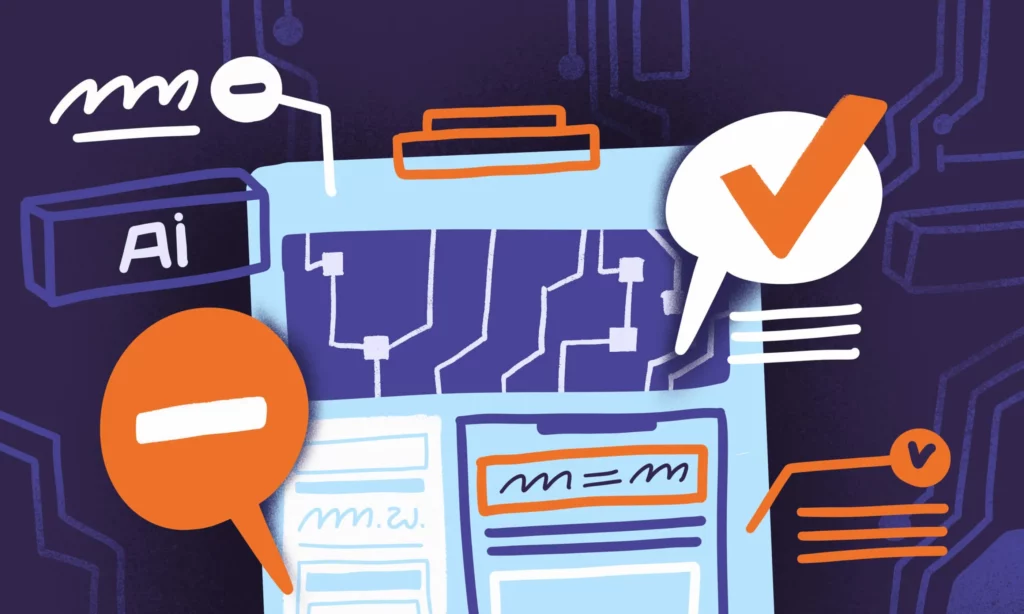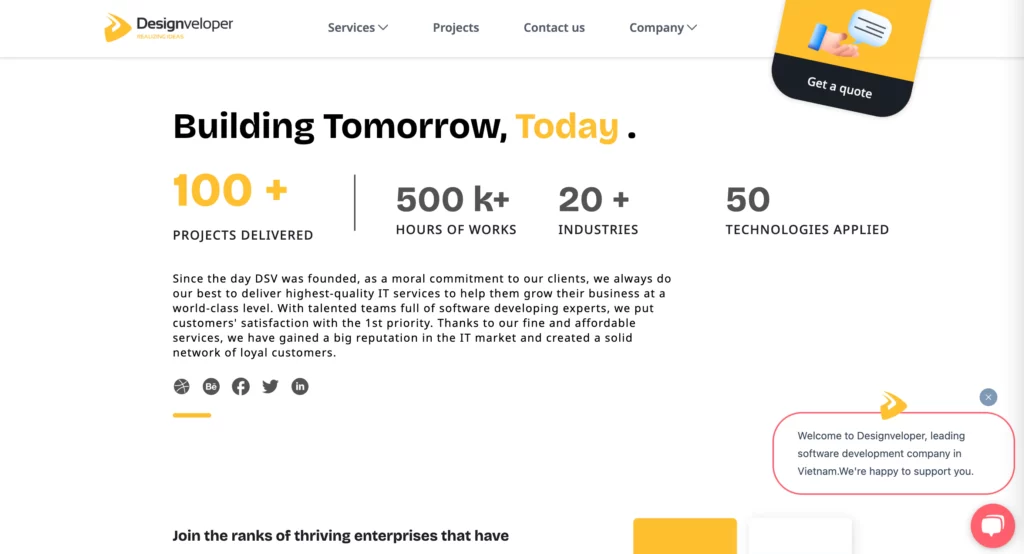AI agents are rapidly becoming part of the modern digital workforce. Businesses deploy these intelligent assistants for customer support, data analysis, marketing, and more. They promise efficiency gains and round-the-clock productivity. However, many organizations are unsure how to budget for AI agents. How much do they really cost? What about ongoing expenses and hidden fees? And most importantly, will the investment pay off? These are crucial questions. An effective AI agent pricing framework can help decision-makers plan costs and avoid unpleasant surprises. This article provides a detailed breakdown of AI agent costs, reveals often-overlooked fees, and offers tips to maximize return on investment (ROI) from your AI initiatives. We also highlight how a seasoned development partner like Designveloper can guide you through this process.
Understanding AI Agent Pricing Models and Frameworks

Creating a solid AI agent pricing framework starts with understanding how AI agents are priced in the market. Vendors today use several pricing models for AI agents, largely falling into four categories.
Fixed Fee Per Agent
First is a fixed fee per agent – treating each AI agent as a “digital employee” with a monthly rate, much like paying a junior staff member. For example, if an AI sales assistant costs $2,000 per month, clients compare it to a $60,000/year human employee it might replace. This fixed-per-agent model draws from headcount budgets and offers predictable costs.
Usage-based Pricing
The second model is usage-based pricing, such as charging per action or request the AI agent handles. This is similar to cloud computing fees: every API call, conversation, or task incurs a small charge. This approach ensures you “pay for what you use,” which can be attractive for variable workloads or pilot projects.
Pricing Per Workflow
Third is pricing per workflow or process automated. In this model, a full sequence of tasks (for instance, an agent that conducts research, then drafts and sends an email) is one billable unit. It’s a middle ground between per-request and outcome-based pricing, ideal for standardized multi-step processes.
Outcome-based Pricing
Finally, some providers adopt outcome-based pricing. Here, you pay only when the AI agent delivers a result or outcome – for example, a completed customer support resolution or a converted sales lead. This model directly ties cost to value delivered, aligning with the customer’s success. In practice, many companies blend these models (e.g. a base subscription plus usage fees), but these four frameworks dominate today’s AI agent pricing framework landscape.
Industry analysis suggests outcome-based pricing may become the most popular in the long run, since it provides the clearest value alignment. However, each model has trade-offs. A flat per-agent fee draws from larger HR budgets but might invite competitors to undercut on price. Usage-based pricing offers transparency, yet if overused it can rack up expenses quickly (and falling cloud costs may pressure these prices downward). Workflow pricing requires clearly defined processes to avoid underestimating complex tasks.
Outcome-based deals are very compelling to buyers but harder to implement – the AI’s performance must be consistently measurable and attributable to justify charging per successful result. The key is choosing a model that fits your agent’s capabilities and the value it provides. For instance, if an AI agent saves labor but has no single output to measure, a per-agent (FTE replacement) or per-workflow model might fit best. On the other hand, if it produces clear deliverables (like completed transactions or qualified leads), outcome-based pricing could demonstrate ROI most directly.
AI Agent Pricing Framework Breakdown: One-Time and Recurring Expenses

An AI agent pricing framework involves several cost components. It’s important to break these down to understand where your budget will go. Up front, there are development costs. These include hiring AI engineers or a development team, designing the agent’s workflows and user interface, and integrating it with your systems. Depending on complexity, building a custom AI agent from scratch can range from tens of thousands to a few hundred thousand dollars. Recent industry guides estimate initial development investments anywhere from $50,000 to $300,000 (or more) for complex, enterprise-grade agents.
Simpler agents (limited functions or leveraging existing frameworks) might be on the lower end or even below that range. The scope of features, the AI model used (pre-trained API vs. custom-trained model), and the level of integration with other software all influence this cost. For example, adding natural language understanding, connecting to legacy databases, or ensuring compliance with data security standards will increase engineering effort and budget.
Training and Data Preparation
On top of core development, training and data preparation can be a significant expense. If your agent requires custom training (for instance, learning from your company’s historical data or documents), you’ll invest in data collection, cleaning, and model training runs. These steps often need specialized talent (data scientists) and computing resources. However, many modern AI agents use existing models (like OpenAI’s GPT series or other large language models) via API, which can reduce initial training costs but introduces ongoing usage fees instead.
Infrastructure and Licensing Costs
Next, infrastructure and licensing costs come into play. An AI agent needs hosting – either on cloud servers or on-premises hardware – and often relies on third-party AI services. Using a large language model API (such as GPT-4) typically incurs a charge per request or per thousand tokens of input/output. For instance, GPT-4’s current rate is around $0.01–$0.03 per 1,000 tokens processed. If your agent handles many interactions, these token costs add up. A moderate product with 1,000 users a day (each having multi-turn conversations) can consume on the order of 5–10 million tokens a month. That translates to a few hundred dollars monthly in API fees just for language model usage, at current prices.
Beyond the AI model, you may need a vector database or retrieval system (to store embeddings or knowledge base data for the agent), which has its own cloud hosting cost. There are also expenses for monitoring, logging, and analytics to track the agent’s performance. These infrastructure elements collectively can run in the thousands of dollars per month for a production AI agent. In fact, a detailed breakdown by one AI development firm suggests that after an agent goes live, you should budget for ongoing costs like LLM API usage ($1,000–$5,000/month), retrieval infrastructure ($500–$2,500), monitoring ($200–$1,000), prompt updates ($1,000–$2,500), and security upkeep ($500–$2,000). All told, this example scenario came to roughly $3,000–$13,000 per month in operating expenses to keep an AI agent running optimally.
Maintenance and Improvement costs
Finally, maintenance and improvement costs are an important part of the breakdown. Launching an AI agent is not a one-and-done expenditure. Just like software, AI agents require updates. You may need to refine prompts, integrate new data sources, handle model updates, or tweak the agent based on user feedback. There is also the human cost of monitoring the AI’s outputs and handling cases it can’t resolve. If you subscribe to an AI platform or service, there may be support or subscription fees as well. In short, when planning an AI agent’s budget, account for both the up-front build cost and a continuous budget for cloud usage, support, and iteration. A common mistake is treating an AI agent like a static software purchase, when in reality it’s more like hiring a team member – you have ongoing “salary” in the form of cloud and maintenance spend.
Hidden Costs and Fees to Watch Out For
Implementing AI agents can come with hidden costs that catch teams off guard. A recent global survey of early AI adopters found that 96% of companies had at least one component of their AI solutions cost more than expected. In fact, 78% said over half of their AI use cases ended up over budget relative to initial plans. This underscores how common it is for expenses to exceed estimates. Being aware of potential hidden fees can help you plan better and avoid budget overruns.
Data-related Work Costs
One frequent hidden cost is data-related work. AI projects often require more data cleaning and preparation than anticipated. Gathering quality training data or integrating diverse data sources can incur extra consulting hours or software fees. Many organizations also underestimate the storage and compute costs for handling large datasets and running AI workloads at scale. For example, fine-tuning a model on your own data might require renting GPU cloud instances, which can be pricey. And if your AI agent uses long context windows or processes many documents, the cost per request will be higher (since more tokens are processed).
Scaling Usage Costs
Another “hidden” expense comes from scaling usage. You might start with a low-volume pilot that seems inexpensive. But if the AI agent succeeds, usage could grow rapidly – and so will variable costs like API calls. As mentioned, an agent answering customer chats could be inexpensive with 100 queries a day, but 10,000 queries a day might blow past your initial budget. It’s wise to model best-case adoption scenarios and ensure the AI agent pricing framework or model (whether pay-as-you-go or fixed tiers) won’t lead to unwieldy costs at scale. In some cases, negotiating a volume discount or enterprise plan with the AI provider can mitigate this. Keep an eye on rate limits and overage fees, which sometimes kick in if you exceed a plan’s quota.
Integration and Customization Costs
Integration and customization fees are easy to overlook as well. If you’re buying an AI agent solution from a vendor, the base subscription might not include heavy customization. Extra integrations (connecting the AI to your CRM, ticketing system, or databases) might incur professional services fees. Similarly, premium support or training for your staff could cost extra. Always clarify what’s included in the quoted price. For custom-built agents, integration work can extend timelines and budgets if your systems are complex or require building new APIs.
Ongoing Support Costs
Ongoing support and “AI operations” costs are another area of an AI agent pricing framework people often underestimate. Your team might need to spend time reviewing the AI’s outputs, especially in the early stages, to ensure quality and compliance. If the AI agent makes errors, there could be costs associated with correcting them or handling exceptions (for instance, if an AI incorrectly handles a customer request, a human may need to follow up, which is a time cost). Robust monitoring and logging, while essential, also carry a cost in terms of tools and personnel. Security and compliance can introduce hidden fees too. Using AI in regulated industries might necessitate investing in encryption, audit logs, access controls, or compliance assessments. Even something as simple as implementing single sign-on or multi-factor authentication for your AI system’s admin dashboard could come with additional licensing fees.
Opportunity Cost
Lastly, consider the opportunity cost and time. If an AI agent deployment drags on due to unexpected difficulties, the delay in realizing value is itself a cost. A recent IDC study noted that on average AI deployments are taking less than 8 months, and many organizations start seeing value within ~13 months. If hidden hurdles push your timeline beyond this, it means a slower ROI. Planning for contingencies – whether it’s a larger cloud bill or extra development sprints – will put you in a better position to keep the project on track. In summary, always budget a cushion for the unknown unknowns: additional data needs, higher usage, integration tweaks, and post-launch tuning. By anticipating these hidden fees, you can avoid unpleasant budget surprises and keep your ROI calculations realistic.
Tips to Maximize ROI from AI Agents

AI Adoption and ROI Trends: Top organizations are seeing over 10× ROI from generative AI initiatives, and typical AI deployments take under 8 months to go live (with value realized within the first year). Source: IDC InfoBrief 2024. These trends show the enormous upside of AI when implemented well. But achieving a strong ROI is not automatic – it requires strategy. Here are some tips to maximize the return on your AI agent investment:
Start with High-Impact Use Cases
Identify tasks that are expensive or inefficient today, where an AI agent could create significant savings or revenue uptick. For example, automating first-line customer support can save substantial labor costs by deflecting repetitive inquiries. Even deflecting just 30% of support tickets could save an estimated $20,000–$50,000 per month for a midsize business. Likewise, a sales prospecting agent that saves your sales team dozens of hours a week can translate into tens of thousands of dollars in value. One scenario analysis showed that an AI sales intelligence agent which automates research and drafting can save 150 hours per week – equating to about $15,000 in value per week – and achieve roughly a 10× ROI within 3–6 months. By starting with use cases that have clear, measurable benefits (e.g. reduced support workload, faster sales cycles, higher output), you set the stage for faster ROI.
Measure and Monitor Outcomes
To ensure you’re getting ROI, establish metrics and track them. For a customer service agent, measure things like resolution rate, customer satisfaction, and reduction in response time. For an internal process agent, track time saved or improvements in output quality. Baseline these metrics before the AI deployment, then monitor them after. Use A/B tests or pilot phases to directly compare performance with and without the AI. If the AI agent isn’t hitting targets, you can iterate or decide to pivot. The goal is to quantify the value – whether it’s dollars saved, revenue gained, or hours freed for your team. In fact, about 66% of companies are already quantifying generative AI ROI, with an average return of $1.41 for every $1 spent (141% ROI) in early studies. Rigorous measurement helps you ensure your AI project joins the winners, not the statistics of pilots that never deliver.
Optimize for Cost-Efficiency
ROI is a ratio of return to cost, so manage the cost side smartly. This doesn’t mean choosing the cheapest options at the expense of performance – rather, aim for cost-effective scaling. For instance, use open-source or smaller AI models where they suffice, and reserve expensive top-tier models for when truly needed (a strategy many teams use to cut costs). Leverage existing frameworks and tools instead of reinventing the wheel – libraries like LangChain or off-the-shelf solutions can accelerate development and reduce engineering effort. Continuously monitor your AI agent’s usage patterns; if you see certain features aren’t used much, you might dial back on those to save resources. Also, keep an eye on provider pricing – AI service costs are evolving quickly. Negotiate with vendors if your usage grows; many will offer better rates at higher volumes or annual commitments, which can improve your cost side of the ROI equation.
Ensure User Adoption and Integration
An AI agent will only deliver ROI if it’s actually used and integrated into workflows. For internal tools, invest in training your staff and driving adoption. Gather user feedback and make adjustments so that the AI agent is truly helping users rather than being seen as a novelty or nuisance. For customer-facing agents, ensure they are properly integrated on your website or channels where customers engage, and that customers are aware of the new support options. High utilization is key to ROI – an underused AI might not justify its cost. Sometimes, early communication and change management can make a big difference. When employees understand that the AI agent will remove drudgery and free them for higher-value work, they’re more likely to embrace it. That, in turn, leads to better outcomes and higher returns.
Plan for Continuous Improvement
Finally, treat the AI agent as an evolving asset. Monitor its performance and continuously improve its knowledge and abilities. Small tweaks – like adjusting a prompt, adding more training data for a confusing case, or integrating one more tool – can boost the agent’s effectiveness, thus increasing its value to the business. Set aside time (and budget) for periodic updates and refinements. Also stay updated on AI advancements: new models or techniques might significantly improve performance or reduce costs.
Adopting a newer, more efficient model in the future could multiply ROI. For example, AI compute costs are expected to drop in coming years, so plan to recalibrate pricing and usage as those gains materialize. The companies leading in AI ROI tend to be those who iterate and scale their successes – a recent study showed top AI leaders are achieving average ROI of 10.3×, far above the norm. They got there by not treating AI as a one-off project, but as a new capability to continuously expand and optimize.
By following these practices, you can tilt the odds in favor of a strong return. Many organizations are indeed seeing significant returns – 92% of early AI adopters report their AI investments are already yielding ROI. Achieving that result comes from smart project selection, careful cost management, and a commitment to measuring value.
Designveloper: Your Partner for Cost-Effective AI Solutions

At Designveloper, we understand the intricacies of AI development costs and value delivery. We are a leading web and software development company in Vietnam, founded in 2013, and have over a decade of experience building high-quality technology solutions. In that time, we’ve delivered hundreds of projects for clients across the USA, Canada, Asia, and Europe. Our team has tackled everything from real-time web applications to large-scale platforms serving millions of users. For example, one of our flagship projects – LuminPDF – has over 70 million users globally, a testament to our ability to engineer systems that scale. We’ve also built advanced solutions like Walrus Education, an innovative e-learning platform, showcasing our versatility in delivering robust products.
Our Services
Our services today span far beyond traditional web development. We offer comprehensive AI development services, including crafting custom AI software, integrating generative AI and chatbot solutions, and providing consulting on AI strategy. We combine this with our expertise in UI/UX design, mobile app development, and cybersecurity to deliver end-to-end solutions. When you partner with us, we act as a one-stop team that can handle the full lifecycle – from brainstorming the AI agent’s use case, to developing and training the model, implementing it into your workflows, and setting up cloud infrastructure for deployment. We do all this with a keen eye on cost-efficiency and ROI. Our engineers leverage modern tech stacks (Node.js, React, Python, etc.) and proven AI frameworks to build scalable solutions quickly. We also ensure that your AI agent is secure and compliant; Designveloper is an ISO 27001-certified company, underscoring our commitment to data security in every project.
Our Pricing
When it comes to AI agent pricing frameworks we’ll help you get it right. Our experienced team can break down the cost structure for you in detail, so you know exactly where your investment is going. We’ve seen common pitfalls like hidden cloud fees and scope creep, and we proactively address them. By scoping projects smartly and focusing on core value features first, we make sure your budget delivers the highest impact.
Our approach often starts with an MVP (Minimum Viable Product) AI agent focusing on the primary use case – this helps contain initial costs and get you to ROI faster. From there, we can help you gradually expand the agent’s capabilities once it’s already adding value. Throughout the process, we use an Agile, transparent approach. Clients get frequent demos and cost updates, ensuring there are no surprises. This is one reason Clutch has recognized Designveloper as one of Vietnam’s top B2B software companies multiple years in a row.
Conclusion
AI agents represent a powerful opportunity to automate tasks, augment your workforce, and generate new value. Understanding their pricing is essential to capitalize on this opportunity sustainably. By establishing a clear AI agent pricing framework, you can dissect the cost structure – from upfront development to recurring cloud fees – and plan properly. Always remember to account for hidden costs and be prepared to adapt as usage grows. When implemented thoughtfully, AI agents can deliver impressive ROI; many organizations are already reporting returns several times over their investment. The key is to start with impactful use cases, keep a close eye on both costs and outcomes, and iterate toward greater efficiency and effectiveness.
As you embark on or continue your AI journey, use the insights and tips provided here to guide your budgeting and deployment strategy. And if you need a helping hand in developing a cost-effective, high-impact AI solution, the team at Designveloper is here to assist. With careful planning and the right expertise, your AI agent can become one of the best investments your business makes – driving savings, growth, and innovation in the years ahead.


